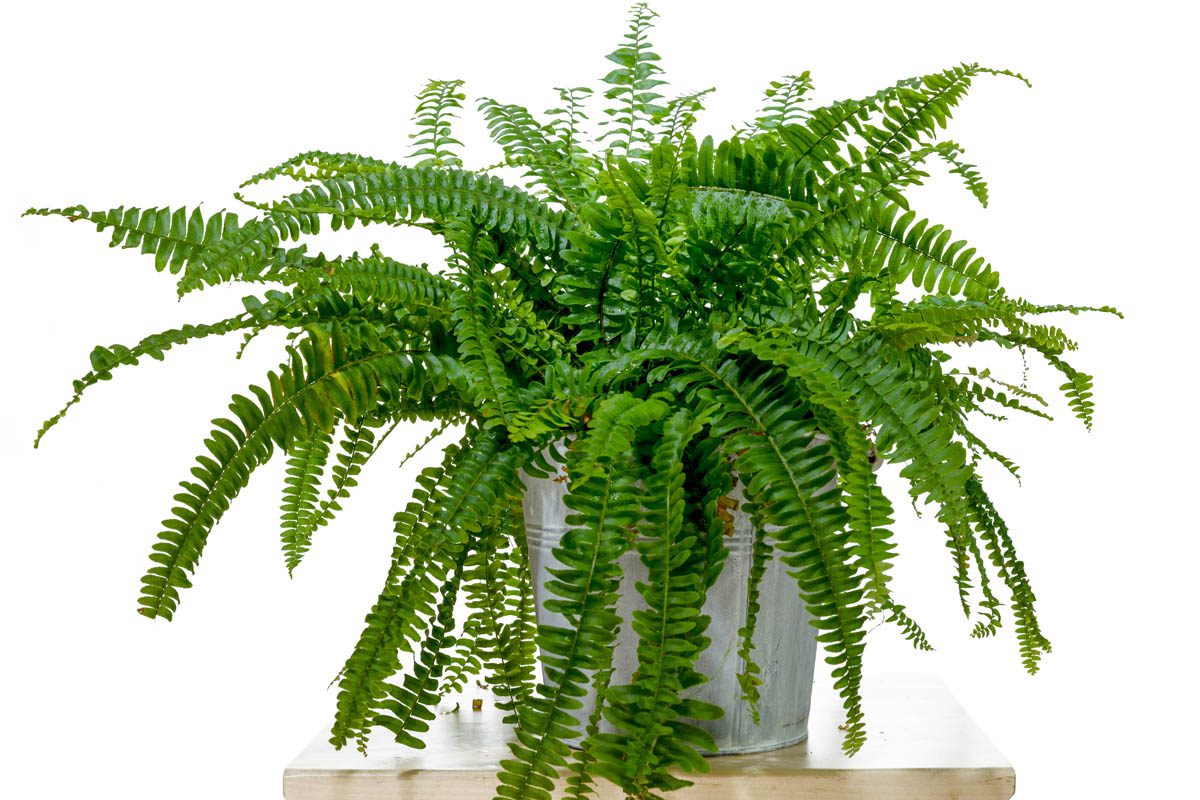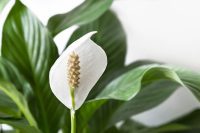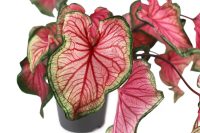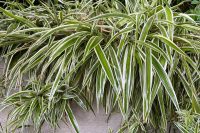At a glance Ι What is Boston fern? Ι How to care for Boston fern Ι Propagation Ι Repotting
At a glance
| Family | Lomariopsidaceae |
| Botanical name | Nephrolepis exaltata ‘Bostoniensis‘ |
| Common names | Boston fern, Fishbone fern, Tuber ladder fern |
| Lifespan | Perennial |
| Habitat | Coniferous forests |
| Mature height | 50 – 150 cm |
| Flower colour |
– |
| Leaf colour |
Green |
| Native to | Americas |
| Toxicity | Pet friendly |
| Soil | Moisture-retaining |
| Humidity | High |
| Propagation | Division |
| Care level | Easy |
What is Boston fern?
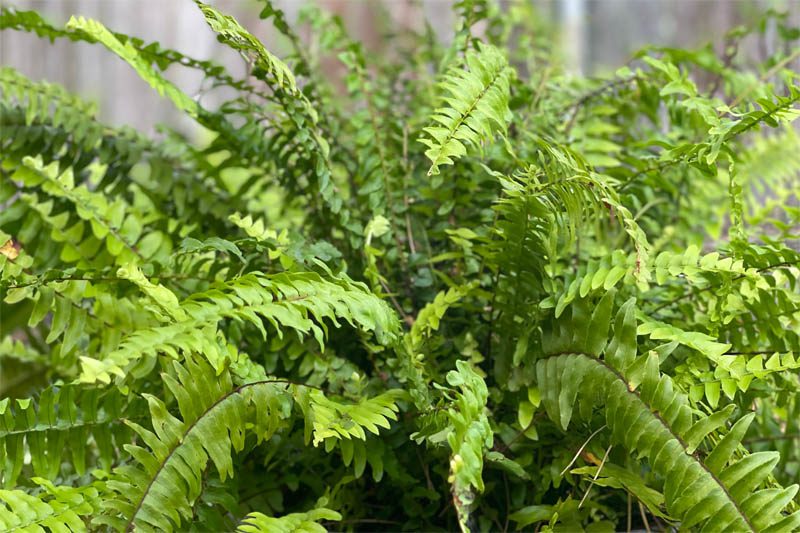
The Boston fern (Nephrolepis exaltata ‘Bostoniensis‘) is a natural variant of the sword fern (N. exaltata) and was discovered in a shipment of 200 plants sent from Philadelphia to Cambridge, Massachusetts in 1894. Florist Fred C. Becker noticed one plant had wider, arching fronds, and was faster growing compared to the other sword ferns in the shipment, and began to propagate this ‘mutant’ variety. Several cultivars of N. exaltata ‘Bostoniensis’ now exist, and the Boston fern has almost entirely replaced the wild-type fern due to its higher light tolerance.
Boston ferns produce a mass of graceful, arching even-pinnately compound (fronds) composed of a leaf stalk (petiole) and a leafy blade. Under the right conditions, a mature Boston fern can reach a height and width of 150 cm. The long, feathery fronds make the Boston ferns grow best in hanging baskets, which allow their fronds to cascade. They are suitable as an indoor plant, and can also grow outdoors in temperate and tropical climates, and make an excellent landscape feature.
The name fishbone fern can also relate to Nephrolepis cordipholia, an Australian native fern that has become invasive outside its natural habitat. The Boston fern has vivid green leaves, compared to the fishbone with darker green leaves that are also narrower than those of the Boston fern.
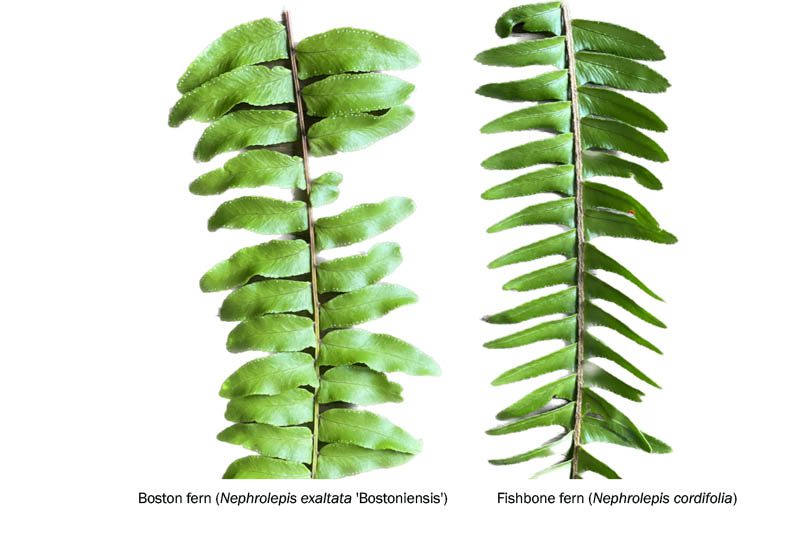
Related: What is a houseplant?
Cultivars
Several cultivars have been developed from Nephrolepis exaltata ‘Bostoniensis‘, which include:
- ‘Dallas’ – This small cultivar is able to tolerate less light and humidity than other Boston fern cultivars
- ‘Compacta’ – As the name suggests, Compacta is a compact Boston fern cultivar, with upright fronds
- ‘Florida Ruffle’ – A medium-sized fern with soft ruffled fronds
- ‘Golden Boston’ – This variety of Boston fern has yellow-green fronds
- ‘Rita’s gold’ – A compact cultivar with yellow-green fronds
- ‘Roosevelt’ – Also known as Rooseveltii, this cultivar has long, arching fronds that can grow as long as 90 cm (3 feet) in length
- ‘Massi‘ – Similar to Nephrolepis exaltata ‘Bostoniensis‘, but with darker green fronds that are more pendulous
- ‘Fluffy duffy’ – A small, fine-textured fern with fronds divided two to three times which creates a dense appearance
How to care for Boston fern
Boston ferns are more tolerant than the sword fern and will thrive as long as their basic needs are met, namely a stable temperature, light and humidity. Most indoor homes tend to be on the dry side due to air conditioning and heating. It is important to understand the natural growing condition of the original sword fern (Nephrolepis exaltata), which is native to moist coniferous forests.
Position:
Ideally, the fern should be located in a north-facing position in the Northern Hemisphere or a south-facing position in the Southern position. Our two outdoor Boston ferns live on the east side of the house, which is surrounded by three large trees to provide plenty of shade. Keep away from draughts, high heat and winds which can damage the delicate foliage.
Soil:
The ideal soil for Boston ferns is organically-rich, moisture-retaining loamy soil with good aeration and drainage. pH should be around 5.0 to 5.5.
Moisture:
Boston ferns like their soil to be consistently moist, but not saturated to avoid root rot. Water less during the winter months when growth has slowed down and increase once new fronds appear. Once established, Boston ferns can tolerate short bouts of dry, but should not be left for extended periods to avoid the fronds drying out and turning brown. If this does occur, water and prune well and the fern will bounce back.
Light:
Boston ferns prefer indirect light to full shade. Too much light can burn the fronds, and not enough light will result in weak fronds and sparse growth.
Humidity:
Boston ferns love a humid environment, mist once or twice a day, and sit the pot on a tray of pebbles, which will increase moisture. Humidifiers in the home during winter will also benefit the Boston fern.
Temperature:
The ideal temperature range for Boston fern is 18 – 30°C (65 – 86ºF). If grown outdoors in cooler climates, move inside once temperatures dip below 10°C (50°F).
Pruning:
Pruning is not necessary unless browning has developed, in which case, take a sharp pair of scissors or shears and remove the affected leaves.
Feeding:
Feed once a month with a water-soluble fertiliser that has a NPK ratio of 20-10-20, during the active growth period (spring and summer), or apply a slow-release fertiliser.
Pests and diseases:
Browning tips: This can be caused by over-fertilising, underwatering or low humidity.
Nematodes: Foliar nematodes are parasitic roundworms in the genus Aphelenchoides that feed on the leaves of the affected plant. Signs of foliar nematodes include brown or black water-soaked lesions and distorted growth of young leaves. Discard affected plants.
Root rot: Caused by several pathogens, or constant over-watering which deprives the roots of oxygen. Use a preventive fungicide and avoid over-watering. Prevention is better than cure, once root rot develops, it is extremely difficult to reverse. Remove the plant from its pot, cut back any dead or dying roots, and repot in fresh potting mix and a clean pot.
Mealybugs: Tiny white insects that have white waxy filaments extending from the edges of their body. These parasitic insects belong to the family Pseudococcidae which thrive in moist and warm conditions. Mealybugs suck the sap from infected plants, causing a yellowing of the leaves, reduced vigour and eventual death. Spray with a neem oil-based product.
Repotting
Remove the plant from its current pot, and place it in fresh potting mix in the new container. Resist the urge to repot into a much larger pot, as this can lead to root rot. Instead, select a pot that is one size larger than the current pot. Repotting is best carried out in spring, as active growth is resuming.
Carefully remove the fern from its current pot, being careful not to damage the roots or fronds. Fill the new pot 1/4 way full with fresh potting medium, add the fern, and backfill the remainder of the pot, ensuring all roots are covered. Water in well. Plant at the same depth as the previous pot and be careful not to bury the crown.
Propagation
Sexual reproduction: Ferns do not produce flowers or seeds, sexual reproduction occurs via sorus (plural sori) that are located on the underside of the leaf. When the sori reach maturity, they are released into the air and can land on suitable substrates. The sori then grow into small, heart-shaped structures called prothalli, which produce male and female gametes. The gametes then fuse to form a zygote, which grows into a new fern plant.
Asexual reproduction: The Boston fern also reproduces asexually through bulbils, which are small plantlets that grow on the fronds of the fern. These bulbils can be removed from the parent plant and planted to produce new ferns. This method of reproduction is faster than sexual reproduction and allows the fern to spread quickly in suitable habitats.
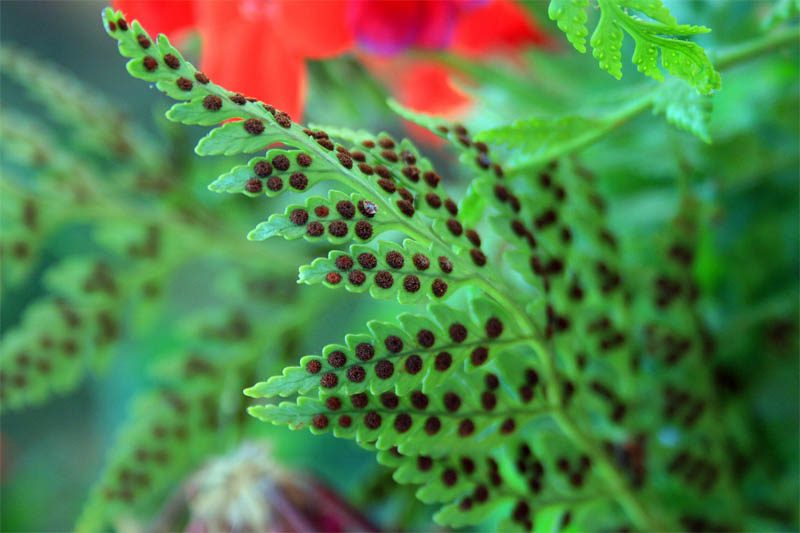
Cultivated Boston ferns are generally propagated by division in the spring, or commercially via tissue culture.
Division: Crowns are formed by the thick, horizontal rhizomes of the fern, which grow close to the surface of the soil. The crowns are the point from which new fronds emerge and grow, and they can also produce bulbils for asexual reproduction. The size and health of the crown can be an indicator of the overall health and vigour of the plant.To divide, remove the plant from its pot and carefully tease apart the roots to form separate crowns. Place in a new pot with fresh potting mix and water well. Do not fertilise until the roots are well established. Division is the method I use, and find it not only easy but so far have had a 100 percent success rate.
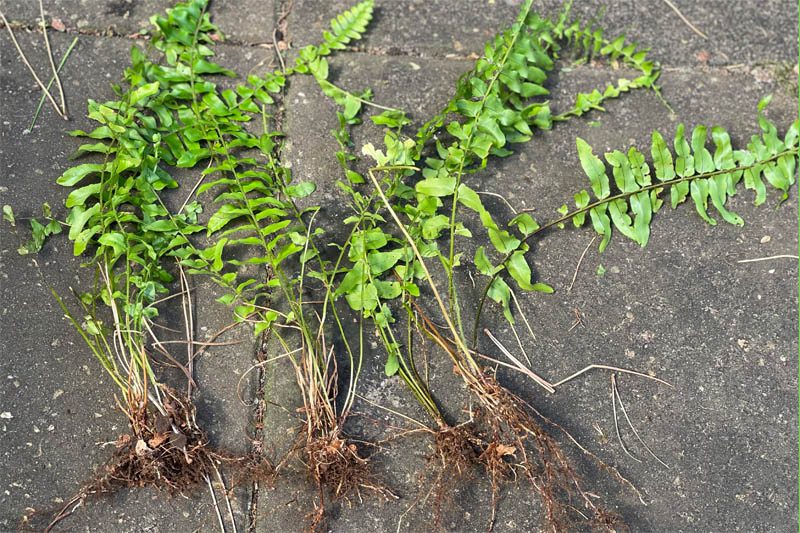
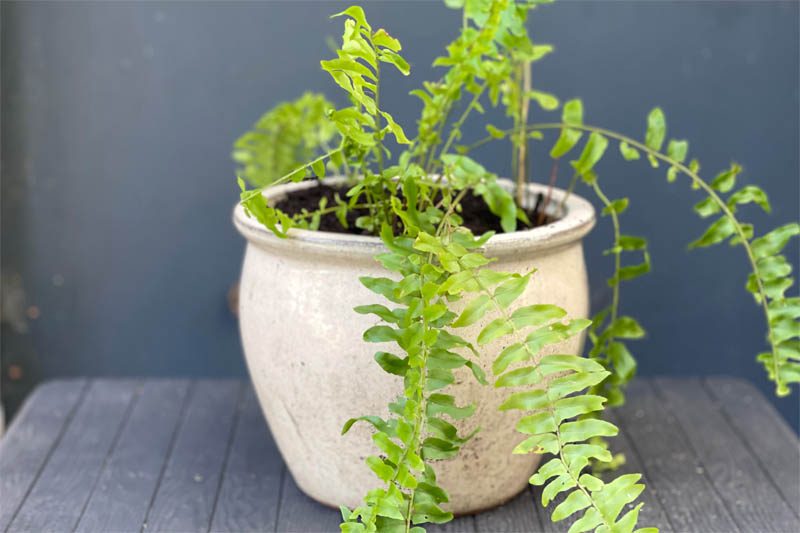
Spores: Propagating via spores is similar to planting seeds and should be carried out in spring or summer, once temperatures reach 20ºC. Carefully dislodge spores from the underside of a fern leaf and spread the spores onto some prepared soil. Mist well and keep the soil moist at all times. It will take 4-6 weeks for the prothallia to sprout.
Julia is a writer and landscape consultant from Wollongong with a love of horticulture. She had been an avid gardener for over 30 years, collects rare variegated plants and is a home orchardist. Julia is passionate about learning and sharing her knowledge of plant propagation and plant toxicology. Whether it’s giving advice on landscape projects or sharing tips on growing, Julia enjoys helping people make their gardens flourish.
